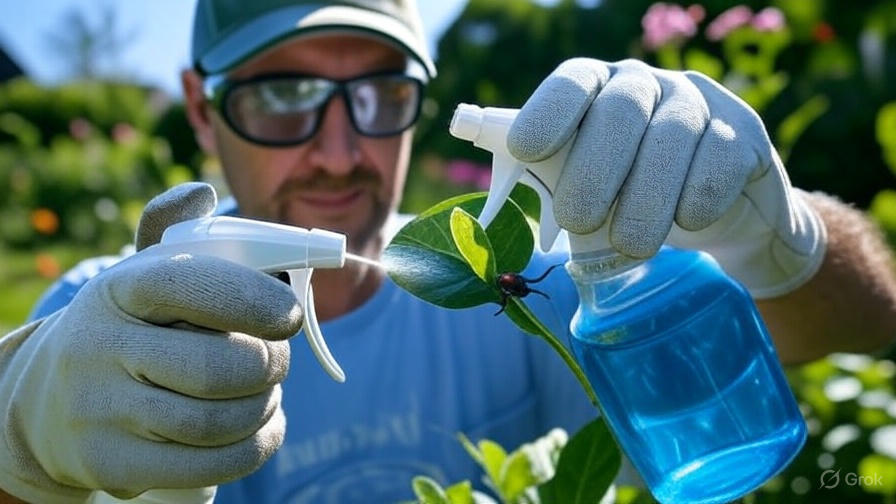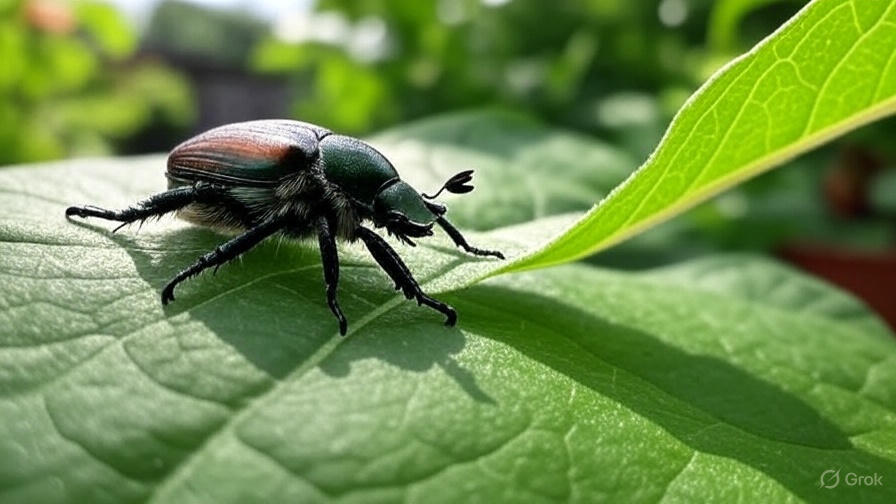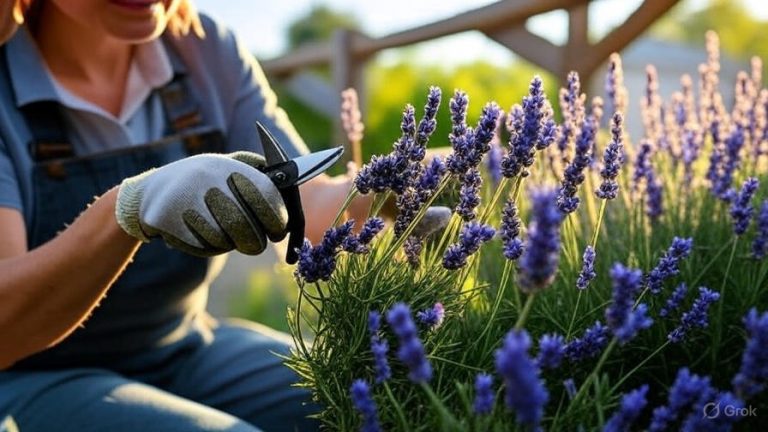How to Get Rid of Japanese Beetles?
Japanese beetles can transform your beautiful garden into a battlefield overnight. These metallic green pests arrive in swarms during summer months, leaving behind skeletonized leaves and frustrated gardeners. You’re not powerless against this invasion. This comprehensive guide provides proven strategies, natural remedies, and professional techniques to protect your plants and reclaim your outdoor space.
Identifying Japanese Beetles and Their Damage
Japanese beetles measure about half an inch long with distinctive metallic green heads and copper-colored wing covers. Their appearance makes them easy to spot among other garden insects. These destructive pests feed on plant tissue between leaf veins, creating a lace-like pattern that gardeners call “skeletonizing.”
Adult beetles emerge from soil in early summer, typically beginning in late June through August. Peak activity occurs during warm, sunny days when temperatures reach 80-95°F. The beetles release powerful pheromones that attract more beetles to feeding sites, causing small problems to escalate into major infestations.
Grubs cause equally serious damage below ground. These C-shaped larvae feed on grass roots throughout fall and spring, creating brown patches in lawns. Adult beetles and grubs represent different stages of the same pest, requiring targeted approaches for each life cycle phase.
Recognition becomes crucial for early intervention. Fresh damage appears as holes between leaf veins, while older damage shows completely skeletonized leaves with only veins remaining. Beetles often feed in groups, making them easier to spot during morning hours when they remain sluggish.
Most Vulnerable Plants and Beetle Preferences
Japanese beetles attack over 300 plant species, but certain plants face higher risk than others. Rose bushes, grape vines, fruit trees, and ornamental trees suffer severe damage. Beetles show strong preferences for American linden, Japanese maple, cherry trees, and apple trees.
Vegetable gardens aren’t safe either. Sweet corn, soybeans, and berry bushes attract heavy beetle populations. Understanding these preferences helps you prioritize protection efforts and plan strategic interventions.
Beetles prefer plants growing in full sun with optimal growing conditions. Stressed plants actually receive less attention from beetles, though this doesn’t mean you should neglect plant health. Instead, focus protection efforts on your healthiest, most valuable specimens.
Timing also matters significantly. Early-flowering plants face less beetle pressure than those blooming during peak beetle season. Consider plant selection and bloom timing when planning future garden layouts.
Hand Picking: The Most Effective Immediate Solution
Hand picking remains the most reliable method for small to moderate infestations. Japanese beetles are sluggish in the early morning, making this the ideal time to collect them. This simple approach requires patience but delivers immediate results without chemicals.
Fill a bucket with soapy water before heading to your garden. Dawn dish soap works perfectly for this purpose. Approach plants gently and knock beetles directly into the soapy solution. Beetles cannot swim and will drown quickly in the soapy mixture.
Early morning collection proves most effective because beetles remain less active in cooler temperatures. They cluster together on preferred plants, making collection easier. Wear gloves if the idea of touching beetles bothers you, though they don’t bite or sting.
Consistency matters more than single collection sessions. Daily morning rounds during peak beetle season prevent population buildup and reduce plant damage. This method works best for smaller gardens where you can reasonably inspect all susceptible plants.
The soapy water method offers several advantages. It kills beetles instantly, prevents their escape, and avoids harmful chemicals near food plants. Empty the bucket contents into compost piles or dispose of them away from garden areas.
Natural Companion Plants That Repel Beetles
Strategic companion planting creates natural barriers against beetle invasions. All herbs and other aromatic plants make wonderful companions. Scented geraniums, rue, feverfew, parsley, and thyme all may help ward off Japanese beetles, along with catnip, chives, garlic, and nasturtiums.
Plant these repellent species around vulnerable plants or create borders throughout garden beds. Strong fragrances from these plants mask attractive scents from preferred beetle food sources. The strategy works best when repellent plants outnumber attractive ones in specific areas.
Garlic and onion family members provide excellent protection. Plant chives around rose bushes or scatter garlic throughout vegetable gardens. These plants serve dual purposes by providing harvest benefits while deterring pests.
Marigolds deserve special mention for their effectiveness. Some plants, like garlic, scallions, marigolds and catnip, tend to repel Japanese beetles. Plant different marigold varieties throughout garden beds for continuous protection and beautiful color displays.
Herbs like mint, sage, and thyme create aromatic barriers while providing culinary benefits. Establish these plants in strategic locations where beetle pressure typically occurs. Remember that mint spreads aggressively, so contain it in pots or designated areas.
Biological Control Methods and Natural Predators
Nature provides several biological controls for Japanese beetle populations. Parasitic wasps and flies target beetle grubs and adults, offering long-term population management without chemical interventions. The Winsome fly has become abundant throughout the Metro region and eastern Minnesota and is likely suppressing Japanese beetle populations. In 2024, parasitism rates ranged from 16% to 30%.
Beneficial nematodes attack grub stages in soil. These microscopic worms seek out and kill Japanese beetle larvae without harming beneficial insects or plants. Apply nematodes during late spring when soil temperatures reach 60°F consistently.
Birds provide natural beetle control when encouraged to visit gardens. Starlings, grackles, and other birds feed heavily on beetle grubs in lawn areas. Install bird feeders and water sources to attract these beneficial visitors.
Encourage predatory insects by maintaining diverse plant communities. Ground beetles, spiders, and robber flies all prey on various beetle life stages. Avoid broad-spectrum insecticides that kill beneficial insects along with pests.
Bacterial diseases also affect beetle populations naturally. Bacillus thuringiensis (Bt) strains specifically target beetle larvae. These biological controls work slowly but provide sustainable population management over time.
Essential Oil and Soap Spray Solutions
Homemade sprays offer immediate beetle control without harsh chemicals. Mix two tablespoons of liquid dish soap with one gallon of water for a basic beetle spray. Spray directly on beetles during early morning or evening hours when beneficial insects remain less active.
Essential oils enhance spray effectiveness significantly. Peppermint, rosemary, and cedar oils all repel Japanese beetles. Add 10-15 drops of essential oil per gallon of soap solution. Test spray mixtures on small plant areas first to avoid leaf damage.
Neem oil provides excellent beetle control with additional benefits. Neem Oil works on a wide variety of pests including Japanese beetles, aphids, mites, whiteflies, flea beetles and earwigs. Apply neem oil according to label directions during cooler parts of the day.
Garlic spray creates another effective natural deterrent. Combine garlic powder with baby oil (about two tablespoons of powder per bottle of oil) and spray this on the leaves of your plants. This mixture changes plant taste and smell, making them unappealing to beetles.
Reapply natural sprays after rain or heavy watering. These solutions work through contact and residual effects, requiring consistent application for best results. Focus spray applications on plant areas showing beetle activity.
Strategic Lawn Care for Grub Prevention
Healthy lawns resist grub damage better than stressed turf areas. Proper watering, fertilization, and mowing practices create conditions unfavorable for beetle reproduction. Deep, infrequent watering encourages deep root growth that better withstands grub feeding.
Mesa County and CSU Extension Tri-River Area are recommending insecticides with the active ingredient chlorantraniliprole to manage larvae of Japanese beetle in turfgrass. Apply grub control products in late spring before adult emergence for maximum effectiveness.
Beneficial nematodes provide organic grub control options. Apply these microscopic predators when soil conditions support their survival. Adequate soil moisture and temperatures between 60-90°F optimize nematode effectiveness.
Overseed damaged lawn areas with grub-resistant grass varieties. Fine fescue and perennial ryegrass show more resistance to grub damage than Kentucky bluegrass. Dense turf growth also makes egg-laying more difficult for adult beetles.
Time lawn care activities to disrupt beetle life cycles. Aerate lawns in early spring to disturb overwintering grubs. This mechanical disruption reduces surviving grub populations before they pupate into adults.

Professional Chemical Controls and Application Timing
Professional-grade insecticides provide rapid beetle knockdown when infestations overwhelm other control methods. The most effective control is synthetic insecticides that have beetles on the label. These are often pyrethroid type insecticides. Follow all label directions carefully and apply during optimal timing windows.
Systemic insecticides offer longer-lasting protection but require advance planning. Apply these products in early spring before beetle emergence. Trees and shrubs absorb systemic chemicals, making plant tissues toxic to feeding beetles throughout the growing season.
Contact insecticides work immediately but require direct application to beetles. These products work best for spot treatments of heavily infested plants. Apply during early morning or evening hours to minimize impact on beneficial insects.
Grub control products need precise timing for effectiveness. Apply these treatments in late spring or early summer when young grubs remain small and vulnerable. Late applications prove less effective as mature grubs prepare for winter dormancy.
Rotate chemical classes to prevent beetle resistance development. Alternate between different active ingredients rather than using the same product repeatedly. This strategy maintains long-term effectiveness of chemical control options.
Trap Placement and Effectiveness Considerations
Japanese beetle traps generate significant controversy among gardeners and pest control experts. These devices use pheromone lures to attract beetles from wide areas. While traps catch impressive numbers of beetles, they often attract more beetles to your property than they eliminate.
Research shows that beetle traps work best when placed away from valuable plants. Position traps at least 30 feet from gardens, with farther distances providing better protection. The goal involves intercepting beetles before they reach your prized plants.
Timing trap deployment affects their usefulness. Install traps early in beetle season before populations peak. Remove traps promptly when beetle activity decreases to avoid attracting late-season beetles to your property.
Consider trap alternatives that provide similar benefits without drawbacks. Barrier methods and repellent plants often prove more effective than traps for garden protection. Reserve trap use for specific situations where benefits clearly outweigh potential problems.
Some gardeners use traps successfully in large properties where distance provides adequate separation. Trap effectiveness increases when combined with other control methods rather than relying on traps alone.
Creating Physical Barriers and Row Covers
Physical barriers provide immediate protection for high-value plants during peak beetle season. Lightweight row covers allow air and light penetration while excluding beetles completely. This method works exceptionally well for vegetable crops and small ornamental plants.
Timing barrier installation requires careful consideration of plant needs. Cover plants before beetle emergence but allow access for pollination when necessary. Remove covers during flowering periods for plants requiring insect pollination.
Individual plant cages offer protection for valuable specimens like roses or fruit trees. Construct cages using fine mesh or cheesecloth that excludes beetles while permitting air circulation. Remove cages after beetle season ends.
Temporary barriers work well during peak beetle activity periods. Monitor beetle populations and deploy barriers when numbers increase significantly. This flexible approach provides protection without permanent garden modifications.
Consider aesthetic impacts when designing barrier systems. Attractive materials and thoughtful placement maintain garden beauty while providing pest protection. Remove barriers promptly when they’re no longer needed.
Seasonal Timing and Life Cycle Disruption
Understanding beetle life cycles enables strategic intervention timing. Adult beetles emerge from soil in early summer, typically beginning in late June. Peak adult activity occurs during July and August when temperatures remain consistently warm.
Grub control timing requires precision for maximum effectiveness. Apply grub treatments in late spring or early summer when young larvae remain small and vulnerable. Late summer applications prove less effective as grubs prepare for winter dormancy.
Fall lawn care disrupts beetle reproduction cycles. Light cultivation in fall exposes overwintering grubs to predators and weather extremes. This mechanical disruption reduces spring grub survival without chemical applications.
Spring soil preparation affects beetle success rates. Early cultivation disturbs pupation sites and emerging adults. Delay spring planting in heavily infested areas until after initial beetle emergence passes.
Monitor weather conditions that influence beetle activity. Hot, dry conditions reduce beetle feeding activity, while warm, humid weather increases beetle problems. Plan control activities around weather patterns for optimal results.
Long-term Garden Management Strategies
Sustainable beetle management requires integrated approaches that address multiple aspects of garden health. Diverse plant communities support beneficial insects that provide natural pest control. Avoid monoculture plantings that create ideal conditions for pest outbreaks.
Soil health improvement supports plants’ natural pest resistance. Well-draining soils with adequate organic matter produce stronger plants that recover faster from beetle damage. Regular compost additions and proper fertilization maintain optimal soil conditions.
Plant selection plays crucial roles in long-term beetle management. Choose beetle-resistant varieties when possible and avoid plants known to attract heavy beetle feeding. Replace severely damaged plants with more resistant alternatives.
Record keeping helps identify patterns and successful strategies. Track beetle emergence dates, peak activity periods, and control method effectiveness. This information guides future management decisions and timing.
Build beneficial habitat throughout garden areas. Native plants, diverse flowering species, and natural areas support predatory insects and other beneficial organisms. These natural allies provide ongoing pest suppression.
Emergency Response for Severe Infestations
Severe beetle infestations require immediate, comprehensive responses to prevent total plant loss. Combine multiple control methods simultaneously rather than relying on single approaches. Hand picking, spraying, and barriers work together more effectively than individual methods.
Prioritize plant protection based on value and replaceability. Focus intensive efforts on established trees, roses, and other valuable specimens that take years to replace. Annual plants can often be replanted if necessary.
Consider temporary plant relocation for container-grown specimens. Move potted plants to protected areas during peak beetle activity periods. This strategy works well for valuable bonsai, rare plants, or sentimental favorites.
Professional consultation becomes valuable during severe outbreaks. Licensed pest control operators have access to more effective products and application equipment. Their expertise can prevent total plant loss in crisis situations.
Document severe infestations for future reference. Photos, dates, and weather conditions help identify factors contributing to outbreaks. This information guides prevention strategies and early intervention timing.
Monitoring and Prevention for Future Seasons
Regular monitoring enables early detection and prompt intervention before small problems become major infestations. Establish weekly garden inspection routines during beetle season. Focus attention on preferred host plants and previous problem areas.
Keep detailed records of beetle activity patterns in your specific location. Emergence dates vary based on local climate conditions and microenvironments. Your personal records provide more accurate timing information than general guidelines.
Plan garden modifications based on previous year’s experiences. Replace heavily damaged plants with resistant alternatives or relocate susceptible plants to areas with better protection options. Learn from each season’s challenges.
Maintain control materials and equipment in ready condition. Keep soap spray ingredients, collection buckets, and other supplies easily accessible. Quick response capability prevents small beetle populations from establishing large colonies.
Build relationships with neighboring gardeners for community-wide beetle management. Coordinated control efforts prove more effective than individual actions. Share information about beetle emergence timing and successful control strategies.
Your garden can recover from Japanese beetle damage with proper planning and consistent effort. Success comes through combining multiple strategies, maintaining vigilant monitoring, and adapting approaches based on seasonal conditions. These persistent pests respond to persistent management, rewarding your efforts with healthier, more beautiful garden spaces.







